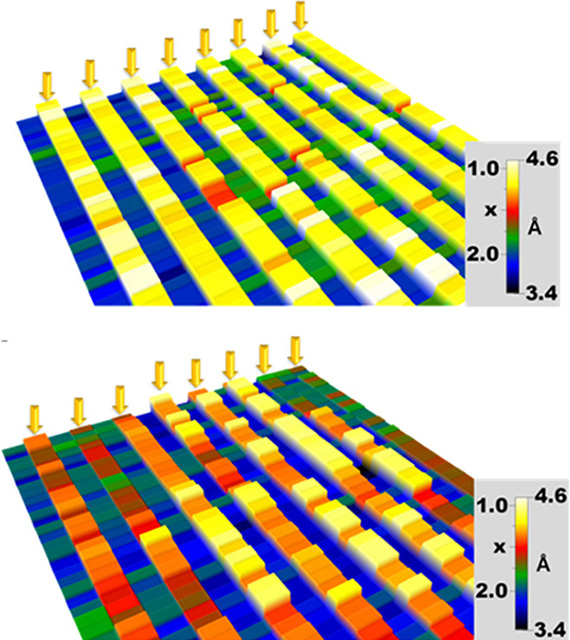Seeing the Voids in Fuel Cell Materials at the Atomic Scale
New microscopy method opens the door to understanding atomic-scale variations in chemistry and improved materials performance in solid oxide fuel cells.

The Science
A method for direct, quantitative mapping of the concentration of atomic sites that should contain oxygen, but don’t—referred to as oxygen vacancies—has been developed. The technique tracks the distance between atoms in oxides via scanning transmission electron microscopy, i.e., it directly images and measures the local expansion of the crystal structure. Its success is based on the sensitivity of atomic scale variations to local chemistry changes such as vacancies.
The Impact
This technique will aid in understanding the physical properties of oxides and potentially improve materials performance in fuel cells, oxide electronics, and other energy-relevant materials.
Summary
A quantitative understanding of the distribution, arrangement and geometry of oxygen vacancies in functional oxides has been a long-standing challenge that needs to be addressed in order to control the physical properties of oxide materials for energy applications. With this information, researchers can begin to understand the behavior of oxygen vacancies and the nature of their interactions, especially across interfaces, in a fuel cell. In this research, a team led by Oak Ridge National Laboratory researchers used scanning transmission electron microscopy to determine the distribution of oxygen vacancies in a fuel cell cathode material, at a resolution less than a single unit cell, through local lattice parameter measurements. This method quantifies oxygen vacancy distribution and homogeneity, which directly control the operation of solid-oxide fuel cells and are intrinsically coupled with magnetic, electronic, and transport properties of oxides. This new approach was successfully demonstrated in lanthanum strontium cobaltite thin films grown on different substrates that have been proven previously to produce variations in oxygen vacancy concentration. Researchers were able to directly image and measure the oxygen vacancies, with the experimental results shown to be consistent with theoretical models. The research opens a new pathway to inform the development of improved fuel cell technologies.
Contact
Albina Y. Borisevich
Oak Ridge National Laboratory
albinab@ornl.gov
Funding
DOE Office of Science, Basic Energy Sciences (BES). Portions of this research were conducted at the Center for Nanophase Materials Sciences and the Spallation Neutron Source, BES-supported user facilities
Publications
Young-Min Kim, Jun He, Michael D. Biegalski, Hailemariam Ambaye, Valeria Lauter, Hans M. Christen, Sokrates T. Pantelides, Stephen J. Pennycook, Sergei V. Kalinin & Albina Y. Borisevich, “Probing oxygen vacancy concentration and homogeneity in solid-oxide fuel cell cathode materials on the subunit-cell level.” Nature Materials 11, 888–894 (2012).
Related Links
http://www.ornl.gov/info/press_releases/get_press_release.cfm?ReleaseNumber=mr20120822-00
Highlight Categories
Performer: University , DOE Laboratory , SC User Facilities , BES User Facilities , SNS , CNMS



